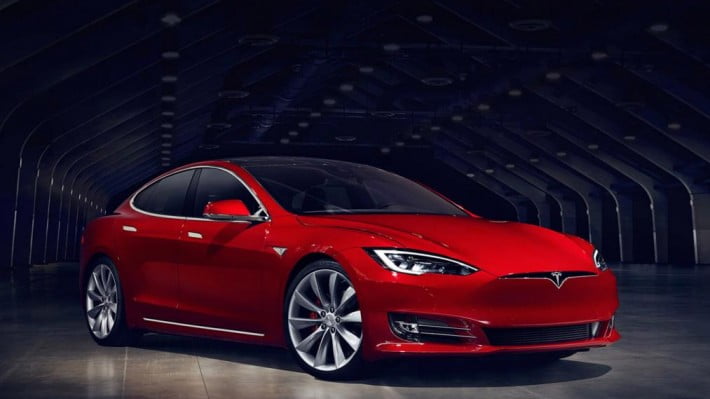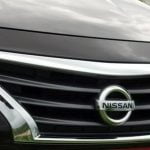

In a sign of just how much the automobile industry is changing, the latest software upgrade to Tesla cars has been greeted with great excitement.
Just a few years ago, the idea that new features could be released on an existing car was unthinkable. But last year, Elon Musk’s electric car company abruptly gave existing Tesla drivers the ability to raise or lower their suspension at the touch of a button.
Now the firm has upgraded its Autopilot feature with the release of its latest operating system, Tesla 8.0.
Here’s what the reviewers think.
Contents
Autopilot is now ‘more human’
Tesla’s cars are now “a little more human”, says Bloomberg.
The older version of Autopilot was annoyingly pedantic, claims the news agency, sticking firmly to the centre of a lane even if the vehicle next to it was straying close to the edge. A human driver faced with this would steer a little to one side to avoid an unnervingly close encounter – but Autopilot didn’t. Indeed, it might even stop the car rather than swerve round an obstacle.
After the update, all of that is improved, says Bloomberg, adding the car “is beginning to act a little more human, adjusting its position in the lane to account for perceived threats from the sides”.
This is particularly useful in crowded urban places like New York, it continues, where drivers “treat lane markers like suggestions rather than rules”.
However, if the car is now more human, Bloomberg feels it is also now more of a scold and says Tesla has instituted the “red hands of shame” – a series of warnings for drivers who are taking the whole autopilot concept too literally.
Not touching the steering wheel for a certain amount of time, depending on road conditions and speed, triggers a series of alarms which if ignored will see Autopilot switched off for the rest of the journey.
Improved entertainment system
There are other changes too. “Importantly,” says Bloomberg, the car has a “much improved entertainment system”. Another new feature turns on the air conditioning automatically if the car overheats to protect children or animals in parked vehicles.
Hack-proofing
Announcing the release, Tesla revealed it had updated the software to cope with hacking attempts after a Chinese team were able to open the boot of a car as it was driven along – from a distance of 12 miles.
According to the BBC’s Dave Lee, the hack – by a team of researchers who immediately reported their success to Tesla – was “notable” for two reasons.
First, the team was able to control the car from a great distance. Second, they were able to take a remarkable amount of control away from the driver: “Brakes, windscreen wipers, all sorts.”
Elon Musk unveils Tesla’s ‘master plan’ for the future
21 July
Tesla’s enigmatic frontman Elon Musk has unveiled the second part of his automotive division’s “master plan”, highlighting ambitions to deliver all-new vehicles and ownership models.
The report comes ten years after Musk first published his blueprint for the company, in which he outlined his strategy to get the company off the ground by building three electric vehicles.
These turned out to be the expensive Tesla Roadster sports car; the Model S family saloon, and the mass production Model 3, to be released in 2017.
Part two includes more EVs, as well as changes to Tesla’s structure and the continued rollout of self-driving technology.
New home energy technologies
Musk’s master plan stresses the importance of turning Tesla into a vertically integrated company through the absorption of SolarCity, his solar energy business, allowing the Tesla name to branch out into new areas.
Tesla already has the Powerwall, a domestic electricity generator, but Musk wants to create a “smoothly integrated and beautiful solar-roof-with-battery product” for the home of the future. He uses the product to defend the controversial decision to tie the two companies together – the BBC reports that many see the move as a bailout of the ailing SolarCity.
All-new cars and more
Of course, being a car company, you’d expect plans to build more.
Alongside the Model 3, which will remain the company’s cheapest car for now, Tesla plans to produce a smaller crossover SUV, to sit beneath the Model X, as well as a “new kind of pick-up truck”.
In addition to consumer vehicles, Tesla is looking at busses and lorries, both of which are in the early stages of development, although we could get our first glimpse next year.
“We believe the Tesla Semi [truck] will deliver a substantial reduction in the cost of cargo transport, while increasing safety and making it really fun to operate,” writes Musk.
However, it is the company’s plans for busses that are of real interest as the company has put self-driving technologies right at the heart of its mass-transit plans
The technology, when it becomes legal and accessible, will see bus drivers become “fleet managers”, says Musk, overseeing a squad of smaller, self-driving busses that can be summoned on-demand through a smartphone, picking passengers up and dropping them off door to door. Bus stops won’t die just yet – they’ll just become summon points.
Self-driving technology
Tesla has already rolled out beta versions of its Autopilot system, saying that even partial autonomy is safer than nothing.
Full self-driving is reliant on Tesla cars doing real miles and commutes with the system. Musk predicts that worldwide regulatory approval will require around six billion miles of testing. At present, Tesla’s research as a whole provides around three million miles a day.
When the technology is ready, all Tesla vehicles will come with the hardware and software necessary to be completely autonomous and fail-safe. Musk says the software is key to this – technologies such as the cameras, radar and sonar systems Autopilot uses are much easier to perfect.
The master plan promises drivers will be able to summon their Tesla from “pretty much anywhere” and do almost anything – within reason – behind the wheel.
New ownership models
Lastly, in a move many say is Tesla going after Uber, Musk writes that full vehicle autonomy will allow drivers to add their car to a fleet of shared ones and have it generate an income.
The company also plans to prop up the fleet with its own EVs in towns and cities where there’s more demand than owners willing to share.
There’s a lot to chew on in Musk’s master plan, but Wired says that individually, none of its ambitions are particularly radical and are actually quite attainable. Many, if not all the major carmakers are now developing self-driving cars, it continues, with some also developing trucks, while the ownership model all but exists already.
However, it adds, the scale of ambition is multiplied when all the parts of master plan “part deux” are tied together.
“It’s so crazy it’s brilliant”, concludes the site.
[source;the week]




